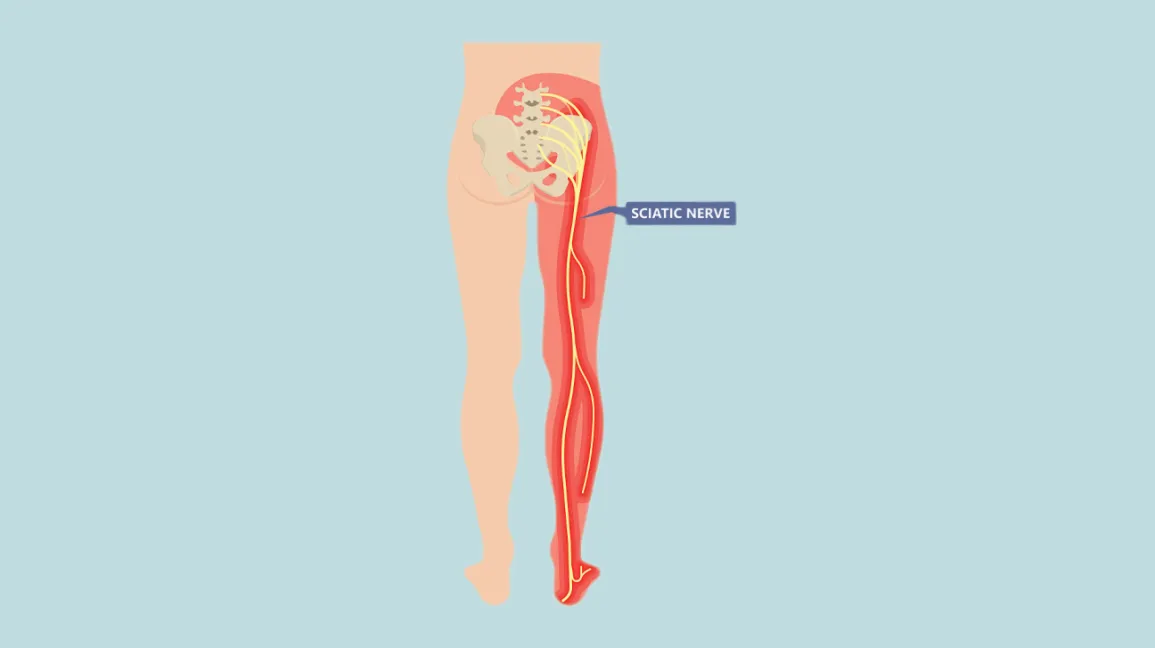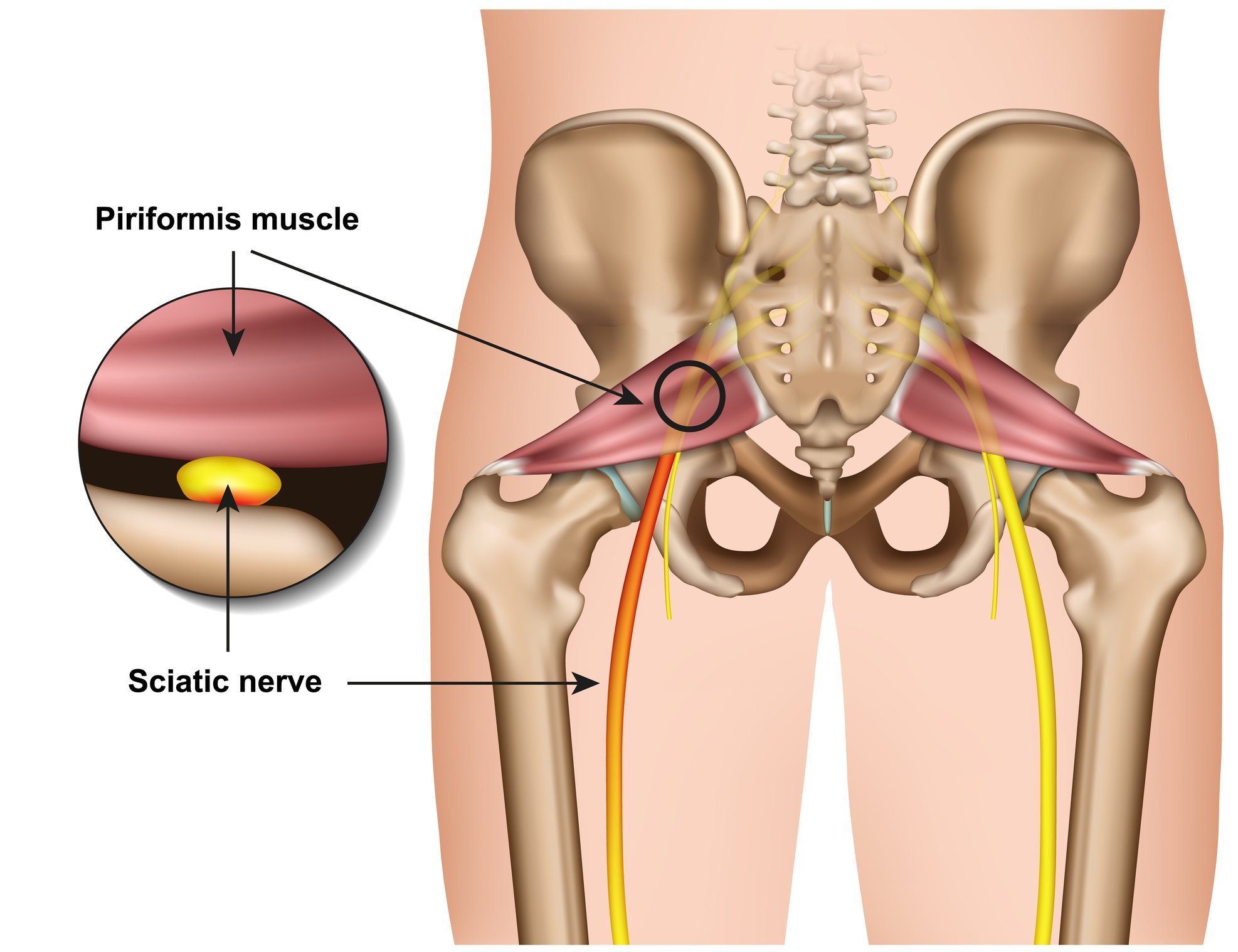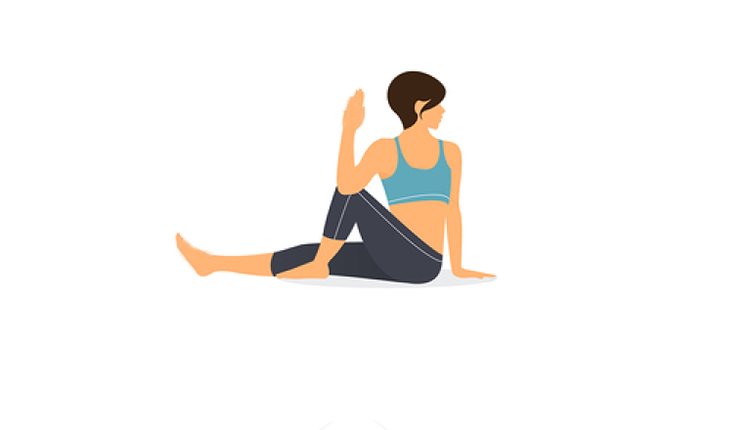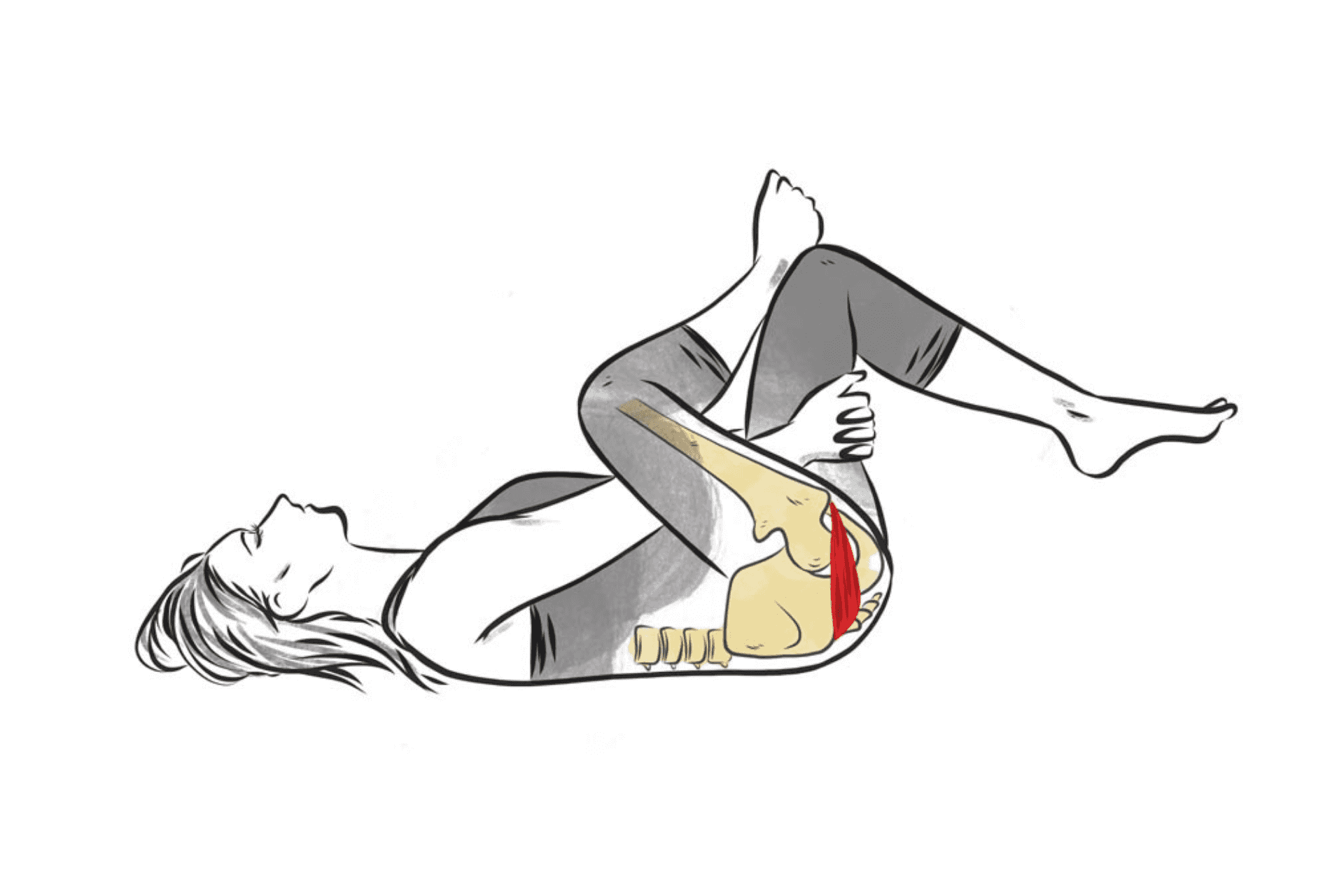Table of Contents
Sciatica is provoked by irritation or compression of the sciatic nerve, which runs from your lower back to your feet. How long does sciatica last? It usually improves in 4 to 6 weeks but can last longer.

If you have experienced sciatica pain, you will recall feeling anxious and desperate for relief. Not only can sciatica pain occur with or without physical activity, but it can also disrupt your sleep, make routine daily activities difficult, and appear seemingly overnight.
If you are experiencing sciatica nerve pain, and want to know more about how long does sciatica last, use this information to learn about your treatment options and how long your symptoms will last.
What is sciatica?
Before knowing more about how long does sciatica last, you need to know what Sciatica is actually. Sciatica is pain that branches down the path of the sciatic nerve, which runs via the back of your body through the hips and buttocks, and down each leg. Sciatica typically affects only one side of your body.
Sciatica is generally caused by a herniated disk, a bone spur on the spine, or a narrowing of the spine (spinal stenosis). This results in inflammation, pain, and numbness in the affected leg.
Although sciatica pain can be excruciating, most cases resolve in weeks with non-surgical treatments. Patients with severe sciatica with significant leg weakness or bowel or bladder changes may be candidates for surgery.
What exactly causes sciatica?
Sciatica is technically caused by excessive stress or damage to the sciatic nerve, which can occur for various reasons. The following are the most typical causes of sciatica:
- Disc herniation
- Stenosis of the spine (narrowing of the spine)
- The spine has a bone spur
- Strain or trauma
Who is susceptible to sciatica?
Sciatica can affect almost anyone, though some men and women may be more susceptible to the condition. Sciatica risk factors frequently include:
- Obesity
- Diabetes
- Pregnancy
- Sedentary way of life
- A physically demanding job
- Advancing years
How long does sciatica last: What is the duration of acute and chronic sciatica?
Sciatica is a backache that begins in the lower back. It moves down the legs and through the hips and buttocks. It happens when the nerve roots of the sciatic nerve become pinched or compressed. As mentioned previously, sciatica affects only one side of the body.
Sciatica can be both acute and chronic. Acute episodes can last one to two weeks and usually resolve within a few weeks. It’s not uncommon to experience some numbness after the pain has subsided. You may also experience sciatica a few times a year.
Acute sciatica can progress to chronic sciatica. This means that the pain occurs regularly. Chronic sciatica is a condition that lasts a lifetime. Although it does not currently respond well to treatment, chronic sciatica pain is often less severe than acute sciatica pain.
What does sciatica feel like?
Because the sciatic nerve runs from the hip to the bottom of the feet, sciatica pain typically affects the bottom, behind the knee, and lower leg.
As a result, many people with sciatica mistakenly believe the pain is from a leg problem rather than a lower back problem.
A slipped or herniated disk is the most common cause of sciatic nerve irritation.
Intervertebral disks are soft tissue cushions between the vertebrae of a person’s spine. When a disk slips, it becomes slightly dislodged and pushes out from the spine. This can cause sciatica by putting pressure on the sciatic nerve.
Other issues, such as tumors or infections, can also cause sciatica.
How long does sciatica last?
The majority of sciatica pain lasts 4 to 6 weeks. Acute pain can sense like a stabbing, shooting, or burning sensation that fades to a dull ache.
Sciatica becomes chronic if it persists for more than 6 weeks without improvement.
Unless the pain is excruciating or lasts more than a year, doctors usually recommend waiting for the problem to resolve without medical treatment.
Also Read: How to Choose a Gym: 5 Important Factors to Consider!
How long does sciatica last: What triggers a sciatica flare-up?
Many lifestyle choices can cause sciatica to develop or worsen. The majority are related to a person’s chronic sedentary lifestyle.
Sitting for long periods, especially with poor posture, can exacerbate or trigger symptoms. Even long periods of lying down can aggravate the sciatic nerve.
Lifting heavy objects without proper technique is another common cause of sciatica. This can result in a slipped disk, putting pressure on the sciatic nerve.
How long does sciatica last: What distinguishes sciatica from back pain?
Sciatica is indicated by pain radiating from the lower back into the leg. Back pain causes discomfort in the lower back.
Numerous other conditions exhibit symptoms similar to sciatica. These are some examples:
- bursitis
- disk herniation
- nerve compression
This is why it is critical to see your doctor for a complete diagnosis. Your doctor will then collaborate with you to develop an appropriate treatment plan.
How long does sciatica last during pregnancy?
According to a 2008 study, 50 and 80 percent of pregnant women experience lower back pain, but it’s highly unlikely to be sciatica.
Your baby’s position can occasionally pressure the sciatic nerve, resulting in sciatica. The pain may last for the rest of your pregnancy, come and go, or disappear depending on whether your baby’s position changes. It should clear up completely after your baby is born.
Besides pain and discomfort for the mother, sciatica in pregnancy does not indicate any problems. Some of your discomforts may be alleviated by prenatal massage or prenatal yoga. You can also try other drug-free sciatica treatments while pregnant.
How long does sciatica last: How to Deal with Sciatica?
Self-care works well for many people with sciatica. Rest for a few days after a flare-up begins, but don’t wait too long before returning to work. Long periods of inactivity will aggravate your symptoms.
Hot or cold packs applied to your lower back may provide temporary relief.
Ice therapy: Try putting an ice pack on your back pelvis if you have acute sciatica. Ice therapy relieves pain almost immediately by constricting blood vessels, decreasing blood flow, and decreasing inflammation in the lower back.
Heat treatment: Heat therapy may help relieve chronic sciatica symptoms by relaxing tight muscles and improving blood flow. These effects may also aid in the healing of your lower back tissues.
Massage: Massage your lower back gently to relieve muscle tension, increase blood circulation, and release endorphins (your body’s natural feel-good hormone). Massage can provide temporary but effective pain relief while promoting the body’s natural healing abilities.
You can also try different stretches for sciatica relief.
Over-the-counter medications such as aspirin or ibuprofen (Advil) may help reduce inflammation, swelling, and pain.
If your signs are severe and home remedies aren’t working, or if your pain is worsening, consult your doctor. They may prescribe the following medications to alleviate your symptoms:
- Anti-inflammatory medications, muscle relaxants if spasms are present and tricyclic antidepressants
- Anticonvulsant drugs
- In severe cases, narcotics
After your signs have improved, your doctor may instruct attending physical therapy. By supporting your core and back muscles, physical therapy can help prevent future flare-ups.
Your doctor may also recommend steroid injections. Steroids, when injected into the area surrounding the affected nerve, can reduce inflammation and nerve pressure. However, due to the risk of severe side effects, you can only receive a limited number of steroid injections.
Surgery may be the last alternative if other treatments have failed to relieve your pain. It may also be an alternative if your sciatica is causing you to lose control of your bowels or bladder.
Changes in lifestyle
You can take the following steps to avoid future sciatica flare-ups:
- Maintaining back strength requires regular exercise.
- Maintain proper posture when sitting.
- When lifting heavy objects, avoid bending over. Squat instead to pick things up.
- When standing for long periods, maintain good posture and wear supportive shoes.
- Maintain a nutritious diet. Sciatica is exacerbated by obesity and diabetes.
How long does sciatica last: Sciatica stretches
Hip stretch on the side
- Lie on the floor on your right side, with your knees slightly bent. Place a pillow beneath your chin.
- Slide your left leg (top leg) slowly toward your chest and lower your knee to the floor.
- Straighten your left leg so that your hip and knee are aligned with your bottom leg, then lower your leg to the floor.
- Repeat three times.
- Repeat on the other side, with the right leg on top.
Hip flexor stretch from the back
- With knees bent and feet flat, lie down on your back on the floor.
- Raise both knees to your chest.
- Get your right knee up to your sternum and wrap your arms around it.
- Straighten your left leg as much as possible and try touching the floor with your knee’s back.
- Maintain the position for 5 seconds.
- Return to the starting posture slowly and relax for 4 seconds.
- Repeat with the other leg.
- Repeat 3 times, switching legs.
Buttocks pinch
- With a small pillow under your abdomen, on the floor, lie down on your stomach.
- Hold your buttocks together tightly for 5 seconds.
- Relax.
- Repeat 3 times more, gradually increasing to 6 repetitions.
Hip rotation in the back
- Lie on your back, legs together, knees bent, and feet flat on the floor.
- Gently lower your right knees, keeping them together and your shoulders “glued” to the floor.
- Do not strain or use muscular effort to force your knees to the floor.
- Hold the position for 15 seconds.
- Relax and return to your starting position.
- Rep on the opposite side.
- Begin with 3 reps on each side, gradually increasing to 6 reps.
Knee-to-opposite-shoulder stretch
- Lie on your back on the floor.
- Extend your legs and raise your feet.
- Bend your right leg over and place your right ankle on your left knee.
- Pull your right leg toward your left shoulder with your hand on your right knee.
- Maintain for 30-45 seconds.
- Rep 3-4 times more.
- Change legs.
How long does sciatica last: Outlook
According to some studies, 40% of people will develop sciatica at some point in their lives, typically between 30 and 50.
Most people’s sciatica will go away on its own in a few weeks without the need for medical treatment. Yoga classes and a few lifestyle changes may be enough to solve the problem.
However, in some cases, the pain can be excruciating and last for months.
Chronic sciatica patients may require medical treatment such as physical therapy, injections, or surgery.
Takeaway
Sciatica is an excruciatingly painful situation. It can make accomplishing daily tasks more difficult. You could have severe pain but only have it on rare occasions, or you could have less severe but constant sciatic pain.
There are numerous methods for relieving sciatica symptoms. In most cases, the pain is completely gone within a few weeks.
Consult your doctor if your symptoms do not improve with home treatment, last for an extended period, or you have difficulty performing daily tasks. Your doctor can assist you in developing a treatment plan that is appropriate for you.













